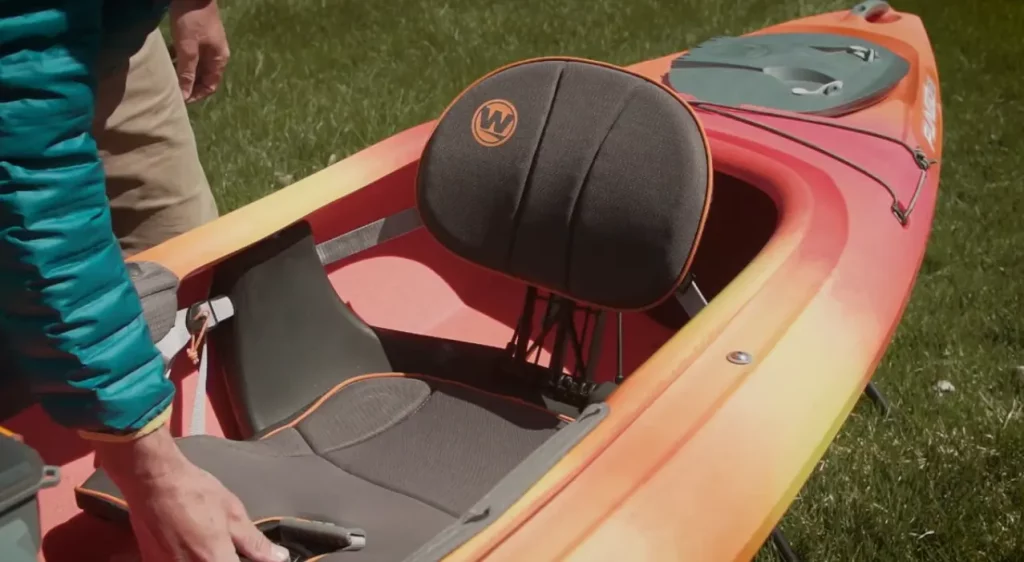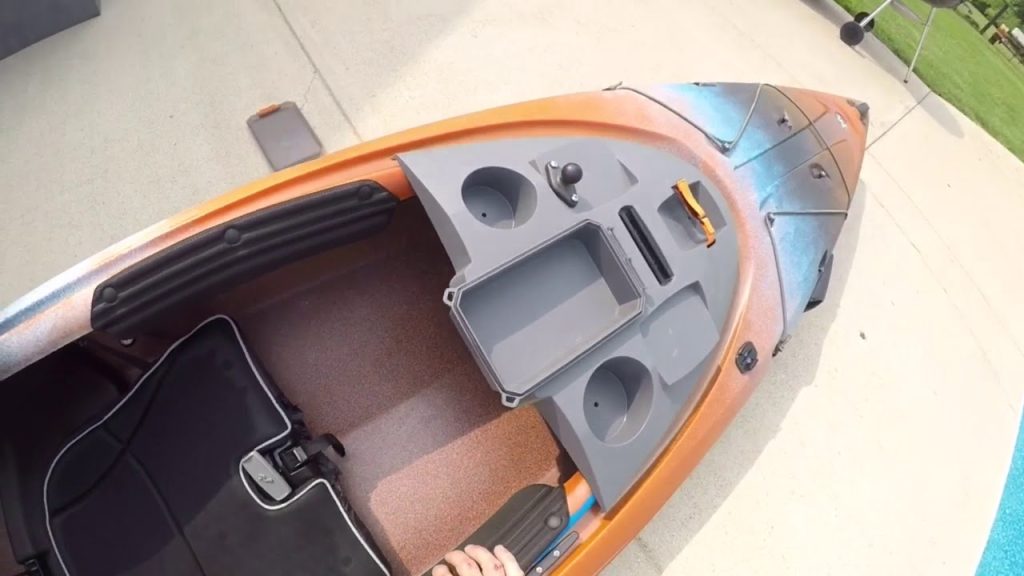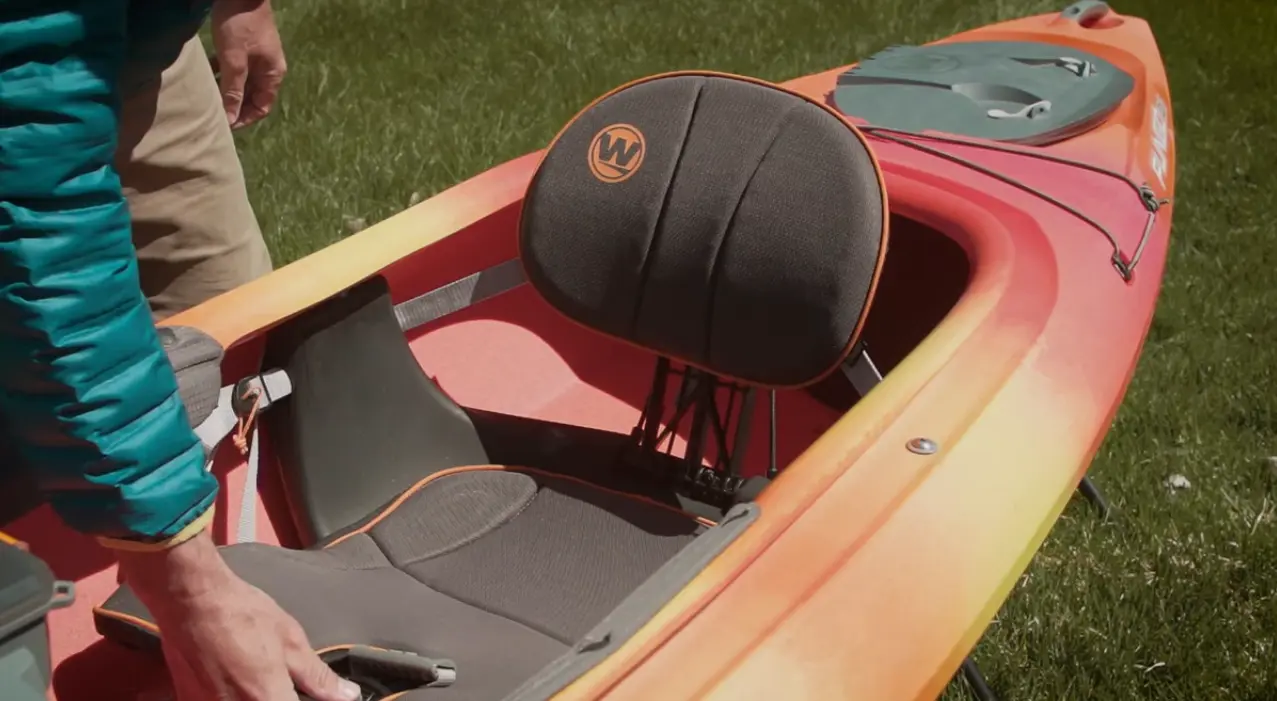When it comes to kayaking, the market is flooded with options that vary in size, shape, features, and price. Among the popular choices for recreational kayaking are the Pungo 120 and Pungo 125 models. Known for their stability, comfort, and performance, these kayaks from the Pungo series have made a name for themselves in the kayaking community. However, choosing between the two can be a bit of a dilemma. Therefore, let’s see who wins in the battle between Pungo 120 vs 125.
In this comprehensive article, we’ll dissect the key features, pros, and cons of both the Pungo 120 and 125 kayaks to help you make an informed decision. We’ll delve into aspects like design, storage, comfort, and overall performance.
Dimensions and Design
Pungo 120

The Pungo 120 is 12 feet long and has a width of 29 inches. It’s designed to provide ample stability, which is a crucial factor for novice kayakers or those who want a relaxing paddle on calm waters. The hull is designed for stability and the deck has a sleek layout, contributing to the kayak’s overall agility and performance.
Pungo 125
Slightly larger, the Pungo 125 measures 12.5 feet in length and has a width of 30 inches. The extra size contributes to better tracking and stability, especially in choppier waters. Although larger, it’s important to note that the extra size may make it a bit more cumbersome to store and transport.
Key Differences
The extra half-foot length and inch in width on the Pungo 125 offer additional stability but come at the cost of increased weight and storage requirements. So, if you have limited space or would prefer something lighter, the Pungo 120 could be a better fit.
Storage Capabilities
Pungo 120
The Pungo 120 offers a stern bulkhead, with a decent storage hatch that allows you to keep some gear dry. It also has bungee cords on the deck for extra storage, which can be handy for keeping a water bottle, map, or other small items within reach.
Pungo 125
The Pungo 125 offers improved storage capabilities, including a more spacious rear hatch and additional bungee cord spaces. It even has a removable dry box for valuables.
Key Differences
The Pungo 125 takes the cake when it comes to storage. If you’re planning longer trips or need to carry more gear, the extra storage could be a significant advantage.
Comfort and Seating
Pungo 120
The Pungo 120 offers a well-designed seating system known for its comfort. The seat is adjustable and has good back support, which makes it a great choice for extended paddling sessions.

Pungo 125
The Pungo 125 features an upgraded seating system with extra cushioning and better lumbar support. The seating adjustments are more user-friendly and offer a better range of motion.
Key Differences
While both models offer great comfort, the Pungo 125 has a slight edge due to its enhanced seat cushioning and easier adjustability.
Performance and Stability
Pungo 120
The Pungo 120 is quite nimble and agile, thanks to its design and smaller size. It’s a good choice for calm waters but may struggle a bit when it comes to tackling waves or strong currents.
Pungo 125

Due to its larger size and hull design, the Pungo 125 performs exceptionally well in various water conditions, including choppy waters. The improved tracking also helps maintain a straight line more effortlessly.
Key Differences
For a versatile performance across a range of water conditions, the Pungo 125 stands out. However, if agility is more critical for you and you’re mostly paddling in calm waters, the Pungo 120 might be more suitable.
Pricing and Value of Pungo 120 vs 125
Pungo 120
Being the smaller of the two, the Pungo 120 is generally less expensive. If you’re on a budget, this could be the better option for you.
Pungo 125
Although more expensive, the added features and improved performance can justify the higher price for many consumers.
Key Differences
Your budget might be the deciding factor here. If you are willing to invest in added comfort, storage, and performance, the Pungo 125 might be worth the extra bucks.
Additional Features and Accessories
When you’re out on the water, sometimes it’s the little things that can make a big difference in your experience. Both Pungo models offer a range of additional features and accessories that are worth considering.
Pungo 120
The Pungo 120 generally comes with basic features, such as foot braces that are slide-adjustable and a cup holder. Some versions include paddle holders on the side, which can be quite convenient.
Pungo 125
The Pungo 125 often comes with extra accessories or features, like a built-in dashboard that provides easy access to small items. You may also find versions that include rod holders for anglers, which makes it a more versatile choice for different kinds of water activities.
Key Differences
The Pungo 125 tends to offer more in the way of additional features and is more adaptable to different accessories, making it the more versatile choice for those who want more than just a simple kayaking trip.
Maneuverability and Transport
While performance in the water is essential, how these kayaks fare out of water is also worth considering.
Pungo 120
Weighing in around 49 pounds, the Pungo 120 is relatively easy to transport. It’s manageable for one person to carry for short distances and fits easily on most car roof racks or trailers.
Pungo 125
The Pungo 125 is heavier, usually weighing around 53 pounds or more, depending on the added features. This might require some teamwork to transport and could be a challenge for those who usually go kayaking alone.
Key Differences
If you often find yourself having to carry your kayak for long distances from your vehicle to the water, the lighter Pungo 120 could make your life a bit easier.
Safety Features
Both kayaks are stable and reliable but offer some different safety features worth noting.
Pungo 120
The Pungo 120 often comes standard with basic safety features like perimeter deck lines and basic foot braces. These are key features for beginners or casual paddlers who prioritize safety.
Pungo 125
The Pungo 125 generally comes equipped with more advanced safety features, including better deck rigging and sometimes even a rudder option. These can be beneficial for those paddling in rougher conditions or over longer distances.
Key Differences
The Pungo 125, with its advanced safety features, may be more suitable for experienced kayakers or those who expect to tackle more challenging conditions.
Maintenance and Durability
Kayaks aren’t just a one-time purchase; they are an investment that requires regular maintenance.
Pungo 120
This model is built with durable, high-density polyethylene, making it quite robust. However, due to its lighter build, it may be prone to more wear and tear over time if used in rough conditions.
Pungo 125
Made from the same material but generally thicker and more rugged, the Pungo 125 is designed to withstand tougher conditions and is likely to last longer with proper care.
Key Differences
If you’re looking for a kayak that will withstand the test of time and varied conditions, the Pungo 125 may be the better long-term investment.
Conclusion of Pungo 120 vs 125 Debate
Both the Pungo 120 and 125 offer great features that appeal to kayakers of different skill levels. While the Pungo 120 offers agility and is a bit lighter, the Pungo 125 excels in storage, comfort, and versatile performance.
To sum it up:
- Choose Pungo 120 if you:
- Have limited storage space
- Prefer a lighter kayak
- Are on a budget
- Mainly paddle in calm waters
- Choose Pungo 125 if you:
- Need extra storage space
- Seek enhanced comfort and support
- Plan to paddle in a variety of water conditions
- Are willing to invest in higher performance and features
In the end, the choice between the Pungo 120 vs 125 will depend on your specific needs and preferences. Happy paddling!
Read more about kayaks:
- What to Wear for Kayaking in Summer
- How to Store a Kayak in the Garage
- What is a Skeg on a Kayak
- What is a Tandem Kayak
- How to Build a Homemade Kayak Launch
- How to Get in a Kayak
- What to Wear for Kayaking?
- How to Transport a Kayak Without a Roof Rack?
- How to Build a Kayak Rack for an RV?
- Are Inflatable Kayaks Safe?
- How to Build a Rack for Kayaks?
- Do Kayaks Have a Weight Limit?
- Wilderness Systems Pungo 120 Kayak Review
- Is it hard to kayak?
- How to Lock a Kayak?
- Where to Kayak with Manatees?

Meet Hudson, an enthusiastic writer and the Chief Editor at Outdoor Bravo Blog. Hudson’s heart belongs to the world of kayaking and kayaks, fueled by his insatiable love for nature and adventure.
